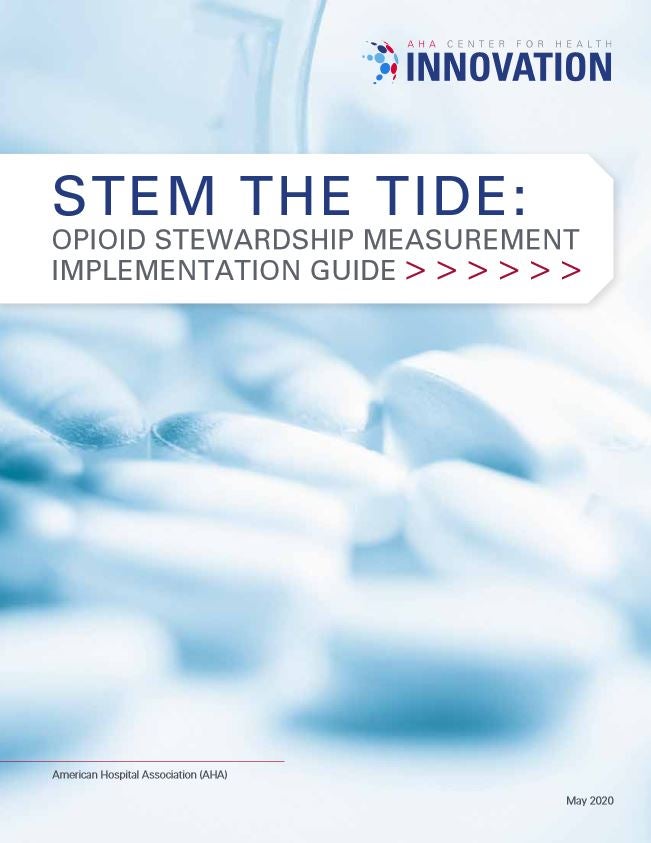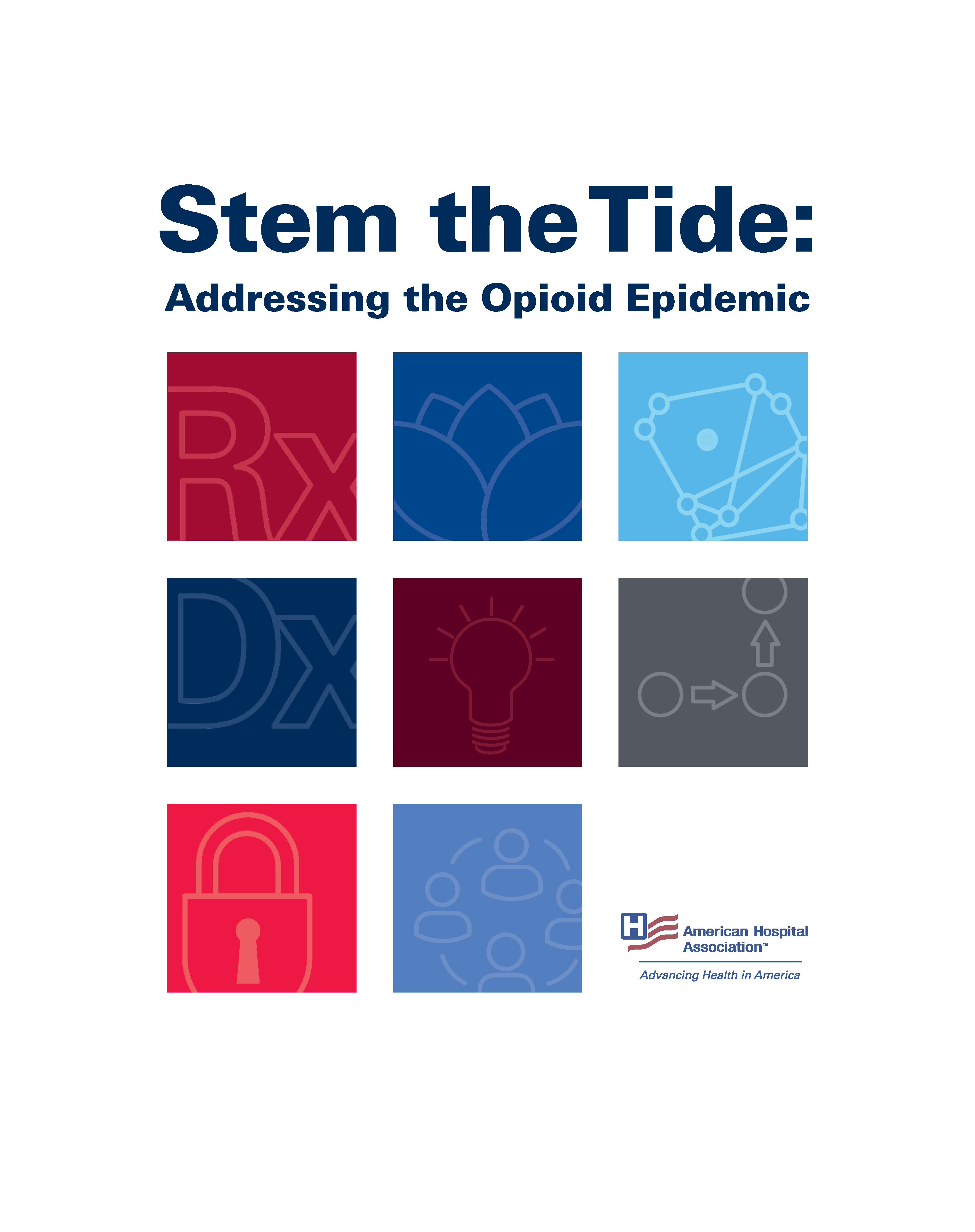
Stem the Tide: Addressing the Opioid Epidemic & Taking Action
Stem The Tide:
Opioid Stewardship Measurement Implementation Guide
The opioid epidemic and COVID-19 pandemic are two health care crises impacting each other. Health care services and treatments for people struggling with opioid use disorder are being severely disrupted by the pandemic. Social isolation is increasing the risk for substance use disorder and overdose deaths. To reduce unnecessary deaths, our health care system must ramp up efforts to address the opioid crisis.
AHA remains focused on providing member resources to enhance opioid stewardship.
AHA has developed an Opioid Stewardship Measurement Implementation Guide as a companion piece to the Stem the Tide: Addressing the Opioid Epidemic toolkit – a widely used resource offering guidance and information to hospitals and health systems on how they can partner with patients, clinicians and communities to address the opioid epidemic.
Developed through rigorous research and collaboration with leading experts, the new measurement implementation guide provides an effective and actionable list of measures to implement best practices using data, address potential gaps in patient care and identify opportunities for continued improvements in opioid stewardship.
The Stem the Tide:
Addressing the Opioid Epidemic
This toolkit provides guidance and information to hospitals and health systems on how they can partner with patients, clinicians and communities to address the opioid epidemic. Developed with input from a multidisciplinary team of front-line clinicians and subject matter experts, the toolkit includes links to guidelines, training, webinars, reports and other resources.
It includes guidance for hospitals and health systems to share with clinicians and patients and to use to enhance partnerships within their communities. The information is categorized into eight topic areas:



